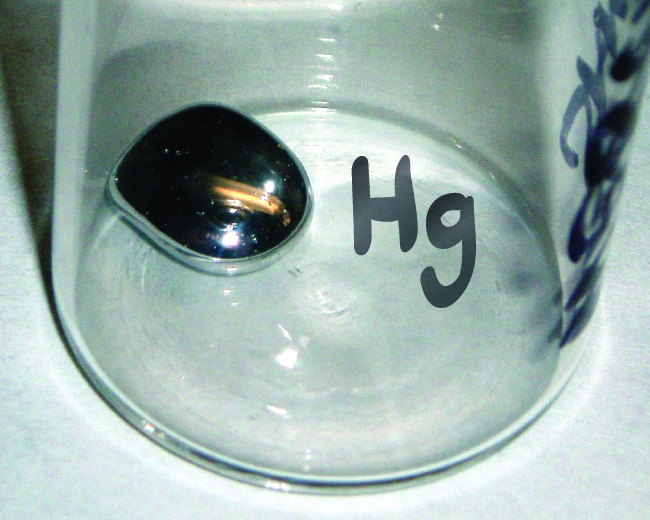| << Chapter < Page | Chapter >> Page > |
A chemical symbol is an abbreviation that we use to indicate an element or an atom of an element. For example, the symbol for mercury is Hg ( [link] ). We use the same symbol to indicate one atom of mercury (microscopic domain) or to label a container of many atoms of the element mercury (macroscopic domain).

The symbols for several common elements and their atoms are listed in [link] . Some symbols are derived from the common name of the element; others are abbreviations of the name in another language. Most symbols have one or two letters, but three-letter symbols have been used to describe some elements that have atomic numbers greater than 112. To avoid confusion with other notations, only the first letter of a symbol is capitalized. For example, Co is the symbol for the element cobalt, but CO is the notation for the compound carbon monoxide, which contains atoms of the elements carbon (C) and oxygen (O). All known elements and their symbols are in the periodic table in [link] (also found in [link] ).
| Some Common Elements and Their Symbols | |||
|---|---|---|---|
| Element | Symbol | Element | Symbol |
| aluminum | Al | iron | Fe (from ferrum ) |
| bromine | Br | lead | Pb (from plumbum ) |
| calcium | Ca | magnesium | Mg |
| carbon | C | mercury | Hg (from hydrargyrum ) |
| chlorine | Cl | nitrogen | N |
| chromium | Cr | oxygen | O |
| cobalt | Co | potassium | K (from kalium ) |
| copper | Cu (from cuprum ) | silicon | Si |
| fluorine | F | silver | Ag (from argentum ) |
| gold | Au (from aurum ) | sodium | Na (from natrium ) |
| helium | He | sulfur | S |
| hydrogen | H | tin | Sn (from stannum ) |
| iodine | I | zinc | Zn |
Traditionally, the discoverer (or discoverers) of a new element names the element. However, until the name is recognized by the International Union of Pure and Applied Chemistry (IUPAC), the recommended name of the new element is based on the Latin word(s) for its atomic number. For example, element 106 was called unnilhexium (Unh), element 107 was called unnilseptium (Uns), and element 108 was called unniloctium (Uno) for several years. These elements are now named after scientists (or occasionally locations); for example, element 106 is now known as seaborgium (Sg) in honor of Glenn Seaborg, a Nobel Prize winner who was active in the discovery of several heavy elements.
Visit this site to learn more about IUPAC, the International Union of Pure and Applied Chemistry, and explore its periodic table.
The symbol for a specific isotope of any element is written by placing the mass number as a superscript to the left of the element symbol ( [link] ). The atomic number is sometimes written as a subscript preceding the symbol, but since this number defines the element’s identity, as does its symbol, it is often omitted. For example, magnesium exists as a mixture of three isotopes, each with an atomic number of 12 and with mass numbers of 24, 25, and 26, respectively. These isotopes can be identified as 24 Mg, 25 Mg, and 26 Mg. These isotope symbols are read as “element, mass number” and can be symbolized consistent with this reading. For instance, 24 Mg is read as “magnesium 24,” and can be written as “magnesium-24” or “Mg-24.” 25 Mg is read as “magnesium 25,” and can be written as “magnesium-25” or “Mg-25.” All magnesium atoms have 12 protons in their nucleus. They differ only because a 24 Mg atom has 12 neutrons in its nucleus, a 25 Mg atom has 13 neutrons, and a 26 Mg has 14 neutrons.

Notification Switch
Would you like to follow the 'Chemistry' conversation and receive update notifications?